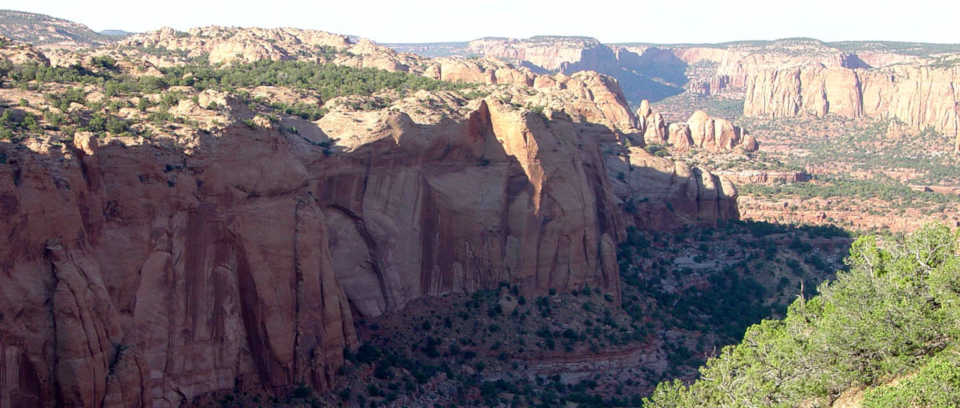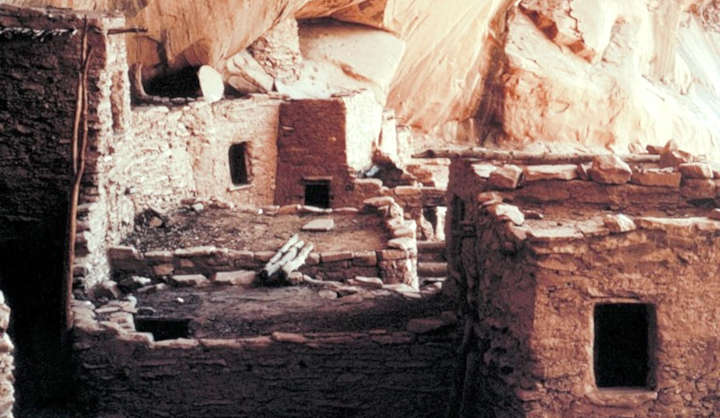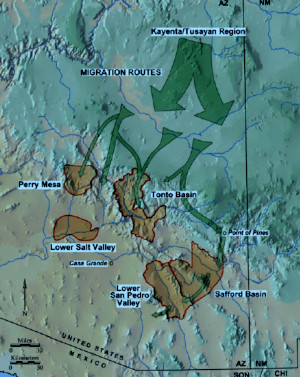Keet Seel

Tsegi Canyon

The Keet Seel ruins
Keet Seel is a Navajo term meaning "Broken pottery scattered around."
The people started building the cliff dwelling around 1250 CE but between 1272 and 1275 there was a sudden building spurt. Then construction slowed until it stopped completely in 1286. Within 20 years the pueblo was completely abandoned. The Navajo stumbled over the site more than 300 years later.
The ruins of Keet Seel were so well protected by the canyon wall it was built into that the pueblo is among the best preserved of all ancient constructions in North America. At its height, there were more than 150 rooms built, including some that were just for storing grain. There were also six kivas.
Apparently, the local environment was good enough to support a relatively large population and provide them with food surpluses. That said, the peak population of around 150 people may have also contributed to the abandonment as the climate continued to get more dry up to about 1300 CE (not that they would have known anything about that arbitrary number).
In the ruins of Keet Seel a dessicated parrot body was found, with a few feathers still attached. That bird had to have been brought north by traders from Mesoamerica almost 800 years ago.

The routes taken by people
migrating south from Kayenta
Keet Seel is located within the archaeological area known as "Kayenta-Tusayan." Today it is part of "Navajo National Monument." Interesting as none of the three non-contiguous pieces of that Monument have anything to do with the Navajo people. They were all abandoned long before the Navajos arrived in the area. And another note: the Navajo had left the ruins alone and removed nothing during the centuries that they knew about them. The first Euro-Americans to find the ruins began looting artifacts and selling them almost immediately.
Archaeologists have proposed reasons for the abandonment based on changes in weather patterns. The Hopis tell a story more of a spiritual quest concerning the Snake and the Horn clans. In the Hopi story, the Horn clan forced the Snake clan out because the Snake clan children were biting other children and causing them to die. The story is likely an allegory for an actual historical event: as the climate got more dry, rattlesnakes probably became more of a problem. In this case, members of the Snake clan are recorded to have relocated directly to the village that was Walpi at the time: at the foot of First Mesa.
The Horn clan is recorded to have relocated to a Flute clan pueblo northeast of Walpi named Leñanobi. There might have been a couple generations passed at Leñanobi before that pueblo was abandoned and the Flute and Horn clans moved to Walpi, too.
Sites of the Ancients and approximate dates of occupation:
Atsinna : 1275-1350
Awat'ovi : 1200-1701
Aztec : 1100-1275
Bandelier : 1200-1500
Betatakin : 1275-1300
Casa Malpais : 1260-1420
Chaco Canyon : 850-1145
Fourmile Ranch : 1276-1450
Giusewa : 1560-1680
Hawikuh : 1400-1680
Homol'ovi : 1100-1400
Hovenweep : 50-1350
Jeddito : 800-1700
Kawaika'a : 1375-1580
Kuaua : 325-1580
Mesa Verde : 600-1275
Montezuma Castle : 1200-1400
Payupki : 1680-1745
Poshuouingeh : 1375-1500
Pottery Mound : 1320-1550
Puyé : 1200-1580
Snaketown : 300 BCE-1050
Tonto Basin : 700-1450
Tuzigoot : 1125-1400
Wupatki/Wukoki : 500-1225
Wupatupqa : 1100-1250
Yucca House : 1100-1275